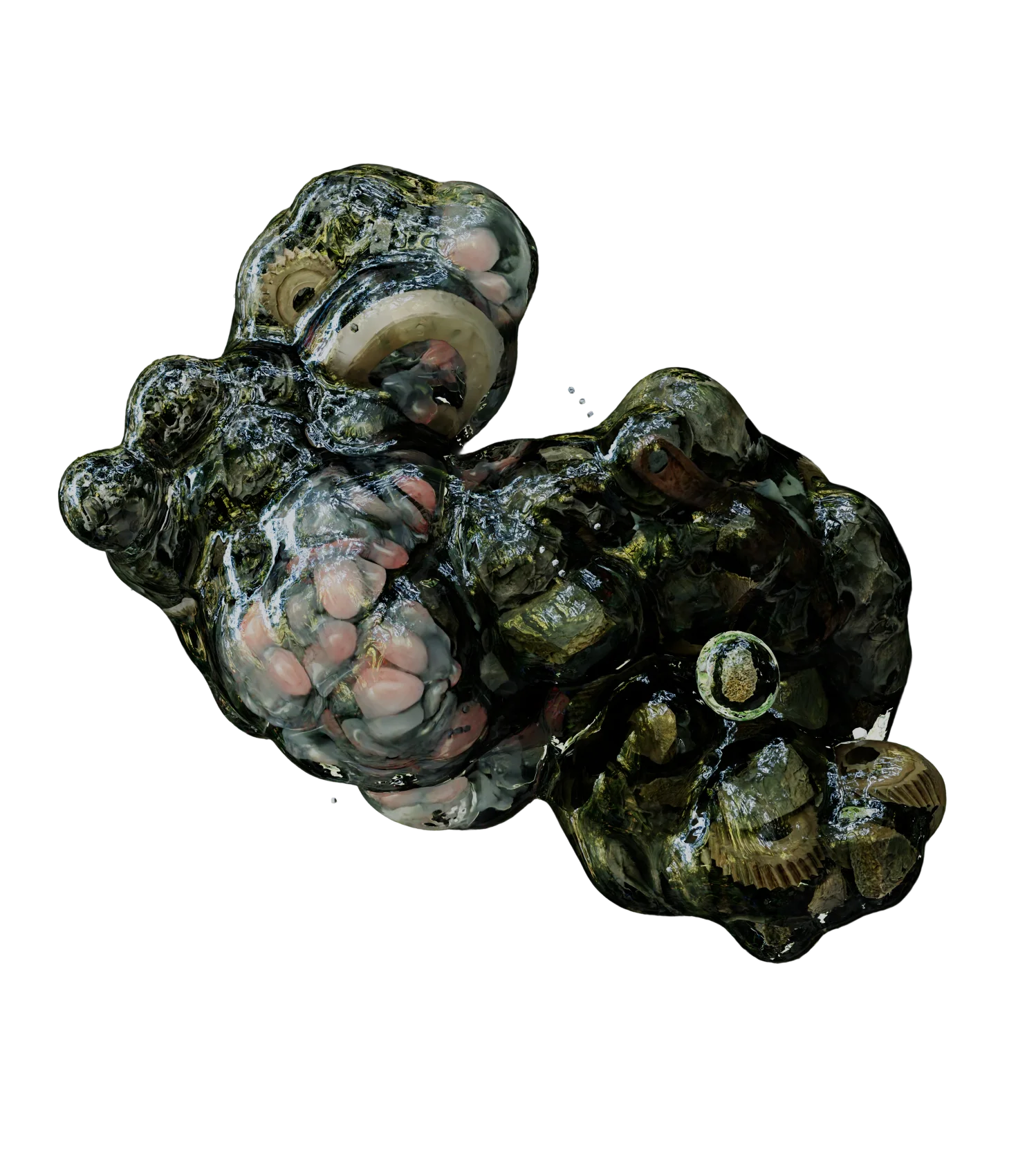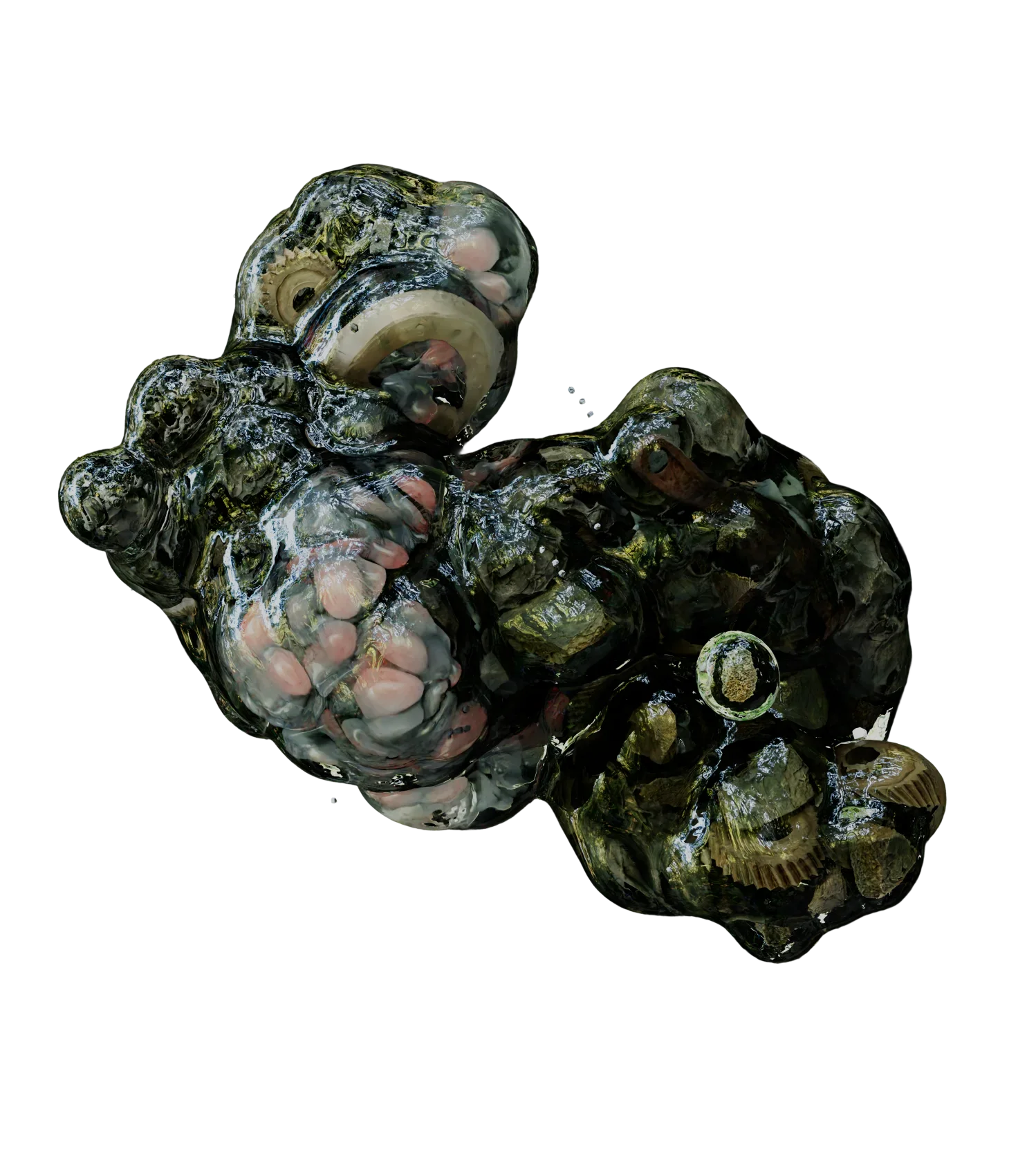
Heavy Waters
undo despot X Zeynep Schilling X u2203 studio (alen hast & myk rudik) Video, live electronic music
This audiovisual performance is a collaboration between undo despot, Zeynep Schilling, and u2203 studio artists alen hast and myk rudik. For the presentation at ∄, the artists will share first glimpses of video material plus a live music performance that gives a taste of the final choreographed AV work still to come. This work-in-progress explores the layered and evolving life of rivers in Ukraine, weaving their transformation from mythical entities and life-giving sources to key assets for industry and now, to sites deeply affected by war. The artists focus on rivers such as the Seym and Oskil, or the area around the destroyed Kakhovka dam, examining the shifting histories of waters in these places. During the Soviet period, many rivers were reshaped to support heavy industry — straightened, dammed, and controlled to serve factories, agriculture, and power plants, as well as cities and households. Today, the same waters are absorbing and carrying the consequences of war. Bombings and destruction, as well the abandonment of critical infrastructure due to proximity to the frontline, unbalance and bring ecosystems to their tipping points. Toxic substances, including heavy metals, sink into the riverbeds or flow throughout river systems, leaving millions without drinking water, and contaminating the agricultural lands of Ukraine’s southern regions, threatening global food security. Some pollutants might remain out of sight, but their long-term impact on ecosystems and communities living along the rivers and beyond is unknown. In Heavy Waters, visual language informed by folklore, scientific research, and ecological documentation is combined with the affective and emotional capacities of sound and composition, transporting the voices of rivers, bodies of water, sediments, and the landscapes they shape and feed. Waters hold more than just physical matter. They carry memory — including trauma and loss — that doesn’t disappear but settles beneath the surface. Like buried memories, these sediments may shape the future in ways we cannot yet fully see or understand.
The Core
Khrystyna Kirik X Mark Bain Sound and archisonic live performance
Warning: This performance uses low frequencies to vibrate the building, which can result in an intense bodily experience. Some zones will be less intense than others – we invite listeners to move around the space to experience different active or less active locations or, in the case of discomfort, to find a spot where they feel at ease. Visitors may also leave through the wardrobe – re-entry is possible. We will provide earplugs to every visitor upon entry to the event, free of charge. Entry is not recommended for individuals with recent hearing injuries. Participation is safe for people with hearing loss. Khrystyna Kirik and Mark Bain explore how the force of war imprints itself into land. Using seismic data recorded during missile strikes and explosions in regions such as Kharkiv and Kherson, they translate this violence into vibration and sound — layering inaudible yet physically impactful low-frequency waves, sonic winds and frequency pools, dense drones, voice, and high frequency textures. Mark works with the architecture of the building, treating the structure of ∄ as a resonating instrument, while Khrystyna uses her voice with a throat mic and audified seismic recordings to create a vibrasonic experience of being engulfed by the earth. Their performance, The Core, unfolds as a journey through five acts, descending from the surface into the depths of the ground. Each act, or layer, evokes not just geological shifts, but emotional ones — asking us to listen with our bodies to the imprints of violence that infuse the soil. The performance aims to create a collective experience of embodied listening — not to shock, but to envelop. Sound resonates through walls, through bodies, through memory. The artists explore how violence reverberates beyond what is seen or reported, and how listening to its traces offers a way to reconnect to the fundamental entanglements and dependencies between humans and nature, including the living soil beneath us. This work is about destruction. But rather than hardening in response to trauma, it invites a softening — a shared space to reflect, dissolve, and re-emerge stronger. It asks: what does the land feel — and can we learn to feel with it?
